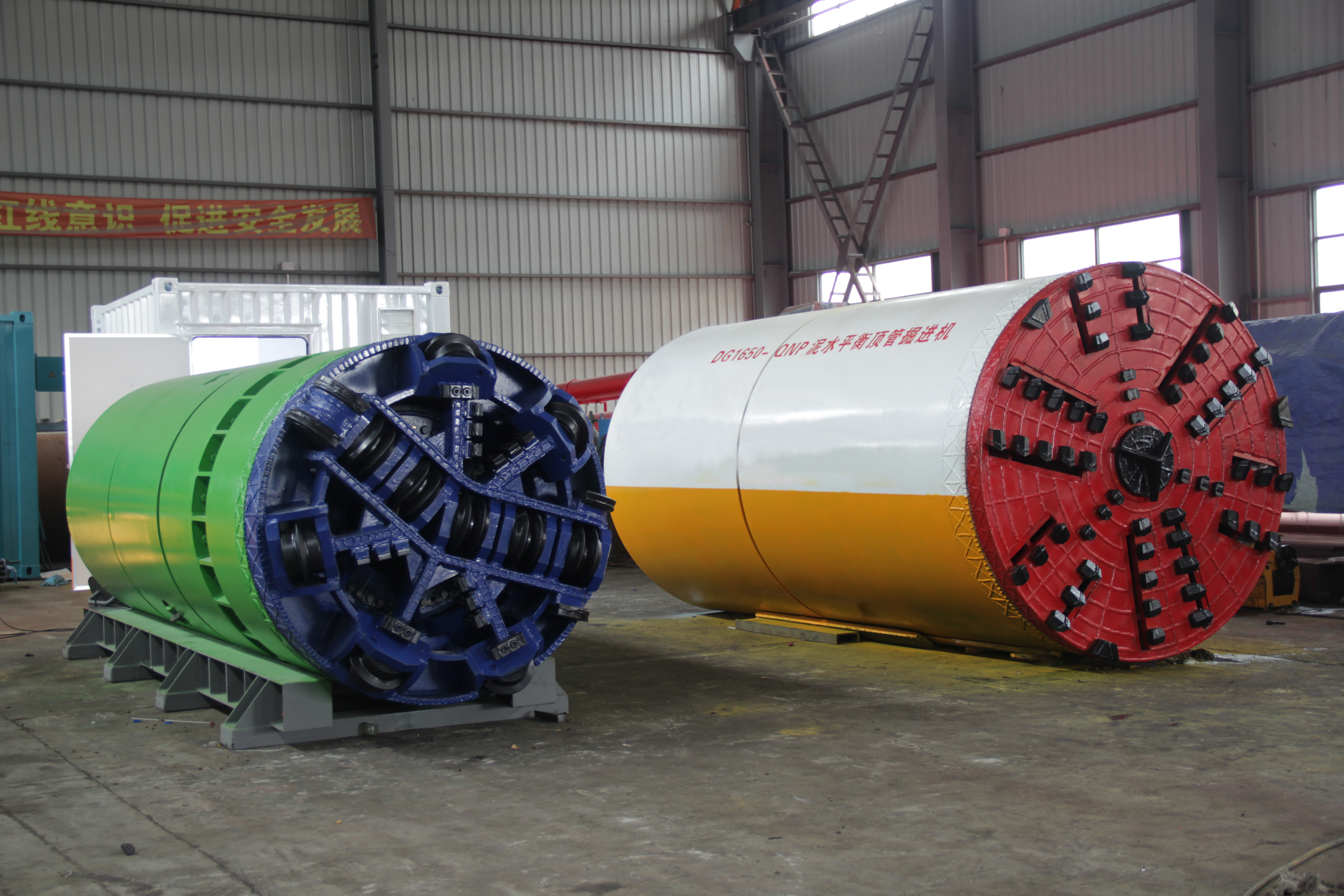ခေတ်မီ ပိုက်ဂျက်ချိန်စက်နည်းပညာတွင် တီထွင်ထားသော အင်ဂျင်နီယာလုပ်ငန်း
The Evolution of ပိုက်ခွံချိတ်ခြင်း နည်းပညာ မြေအောက် ဆောက်လုပ်ရေး နည်းစနစ်တွေကို တော်လှန်ပြောင်းလဲပေးခဲ့ပါတယ်၊ ခေတ်မီတဲ့ ပိုက်ခွံဆွဲစက်တွေနဲ့အတူ စီမံကိန်း တိကျမှုကို သိသိသာသာ တိုးမြှင့်ပေးတဲ့ ရှုပ်ထွေးတဲ့ လုပ်ဆောင်ချက်တွေကို ထည့်သွင်းထားပါတယ်။ ဒီအင်ဂျင်နီယာ အံ့ဖွယ်ရာတွေဟာ စက်ပစ္စည်း စွမ်းအားနဲ့ ဒစ်ဂျစ်တယ် အသိဉာဏ်ကို ပေါင်းစပ်ပြီး ထူးခြားတဲ့ တိကျမှုကို ထိန်းသိမ်းရင်း ရှုပ်ထွေးတဲ့ မြေအောက် တပ်ဆင်မှုတွေကို လုပ်ဆောင်ပါတယ်။ စီမံကိန်း ရလဒ် တိုးတက်လာစေရန် အဓိက ပါဝင်သော အချက်များကို နားလည်ရန်ဟာ မြေအောက် အခြေခံအဆောက်အအုံ ဖွံ့ဖြိုးရေးတွင် လုပ်ကိုင်နေကြတဲ့ ဆောက်လုပ်ရေး ကျွမ်းကျင်သူများနဲ့ စီမံကိန်း မန်နေဂျာများအတွက် မရှိမဖြစ် လိုအပ်ပါတယ်။
အဓိကနည်းပညာဆိုင်ရာ အစိတ်အပိုင်းများ
လေဆာလမ်းညွှန်စနစ်
တိကျသောပိုက်များကိုတူးဖော်ရာတွင် လေဆာလမ်းညွှန်မှုစနစ်သည် အရေးပါသောနေရာတွင်ရှိပါသည်။ ဤနည်းပညာသည် လုပ်ငန်းဆောင်ရွက်သူများအား တူးဖော်ရေးလုပ်ငန်းစဉ်အတွင်း တိကျသောတည်နေရာကို ထိန်းသိမ်းပေးနိုင်ရန် တိကျသောအချက်အလက်များကို ပေးပို့ပါသည်။ ခေတ်မှီပိုက်တူးစက်များသည် ခက်ခဲသောအခြေအနေများကို ဖြတ်သန်း၍ရပြီး ရှည်လျားသောအကွာအဝေးများတွင်ပင် တိကျမှုကိုထိန်းသိမ်းထားနိုင်သော တိုးတက်သောလေဆာနည်းပညာကို အသုံးပြုပါသည်။ ဤစနစ်သည် စက်၏တည်နေရာကို ရည်မှန်းထားသောလမ်းကြောင်းနှင့် နှိုင်းယှဉ်၍ တစ်ပြေးညီစွာစောင့်ကြည့်ပေးပြီး လွဲမှုများဖြစ်ပေါ်သည့်အခါ ချက်ချင်းပြင်ဆင်မှုများပြုလုပ်နိုင်ပါသည်။
လေဆာလမ်းညွှန်မှုနှင့် ကွန်ပျူတာစနစ်များကို ပေါင်းစပ်ခြင်းသည် တစ်မီလီမီတာအောက်အတိအကျကို ထိန်းသိမ်းပေးသော အင်အားကြီးမားသောပေါင်းစပ်မှုဖြစ်ပါသည်။ လုပ်ငန်းဆောင်ရွက်သူများသည် နှိုင်းယှဉ်ပြသသော ပြသမှုများမှတဆင့် လက်ရှိတည်နေရာ၊ ဦးတည်ချက်နှင့် လိုအပ်သောပြင်ဆင်မှုများကို တစ်ပြေးညီအချိန်မှာပင် အချက်ပြခြင်းခံရပါသည်။ ဤအတိအကျမှုသည် ရိုးရာတူးဖော်ရေးနည်းလမ်းများတွင် မဖြစ်နိုင်ဟုထင်ခဲ့ရသော်လည်း ယနေ့တွင် တိကျသောပိုက်တူးဖော်ရေးစီမံကိန်းများ၏ အဓိကအခြေခံအဖြစ်သို့ရောက်ရှိနေပါပြီ။
ဟိုက်ဒရောလစ်ထိန်းချုပ်မှုစနစ်များ
ခေတ်မှီ ပိုက်ဂျက်ချိတ်စက်များတွင် ဟိုက်ဒရောလစ်စနစ်များသည် အင်ဂျင်နီယာဒီဇိုင်း၏ အနုပညာရှင်များကို ကိုယ်စားပြုပါသည်။ ဤစနစ်များသည် ဖိအားနှင့် ရွှေ့ပြောင်းမှုကို တိကျစွာထိန်းချုပ်ထားသည့်အတွက် ဂျက်ချိတ်ရန် လိုအပ်သော အားကို ပေးဆောင်ပါသည်။ ပြောင်းလဲနိုင်သော ဖိအားထိန်းချုပ်မှုများသည် မြေဆိပ်မှုနှင့် ပိုက်အထူးသီးခြားပြုမှုများအပေါ် အခြေခံ၍ အားကို ညှိနှိုင်းရန် စက်ရုံများကို ခွင့်ပြုပါသည်။ ပိုက်များကို ပျက်စီးမှုမှ ကာကွယ်ပေးပြီး တည်ငြိမ်သော တိုးတက်မှုကို သေချာစေပါသည်။
တိုးတက်သော ဟိုက်ဒရောလစ်စနစ်များတွင် မြေပြင်အခြေအနေများ ပြောင်းလဲလာသည့်အခါတုံ့ပြန်သော အော်တိုမေတိတ် ဖိအားစီမံခန့်ခွဲမှု လုပ်ဆောင်ချက်များကို ထည့်သွင်းထားပါသည်။ ဤအက်ဒေါ့ပ်တိဗ် စွမ်းရည်သည် ပိုက်ပျက်စီးမှုကို ကာကွယ်ရာတွင် ကူညီပေးပြီး ဂျက်ချိတ်အား တိကျစွာ ဖြန့်ဖြူးပေးမှုကို သေချာစေပါသည်။ ဤအရာများသည် တပ်ဆင်မှုလုပ်ငန်းစဉ်အတွင်း တိကျမှုကို ထိန်းသိမ်းရာတွင် အရေးကြီးပါသည်။
ဒစ်ဂျစ်တယ် ပေါင်းစည်းမှုနှင့် စောင့်ကြည့်ခြင်း
အချိန်တစ်ခုတည်းမှ ဒေတာစုဆောင်းခြင်း
ပိုက်ဂျက်ချိတ်များတွင် တပ်ဆင်ထားသော ကြိုးမဲ့ဆန်ဆာများက လည်ပတ်မှုဆိုင်ရာ အချက်အလက်များကို တစ်ခါတည်းစုဆောင်းပေးပါသည်။ ဂျက်ချိတ်များ၏ အားနှင့် အမြန်နှုန်းမှသည် မြေအခြေအနေများနှင့် စက်ပိုင်းဆိုင်ရာ အနေအထားအထိ အားလုံးကို စောင့်ကြည့်ပါသည်။ စုဆောင်းထားသော အချက်အလက်များကို အချိန်နှင့်တပြေးညီ ကိုင်တွယ်ပေးပြီး ဂျက်ချိတ်များ၏ လည်ပတ်မှုအခြေအနေနှင့် စွမ်းဆောင်ရည်အကြောင်း အသုံးပြုသူများအား အပြည့်အစုံ အချက်အလက်များ ပေးပို့ပါသည်။
ဤသို့အချက်အလက်များကို တစ်ခါတည်းစီမံပေးခြင်းဖြင့် ပြဿနာမဖြစ်မီ ဖြစ်နိုင်ချေရှိသော အခက်အခဲများကို စောစီးစွာ သိရှိနိုင်ပြီး ဆုံးဖြတ်ချက်များကို တိကျစွာချမှတ်နိုင်ပါသည်။ တစ်ချိန်တည်းတွင် ပါရာမီတာများစွာကို စောင့်ကြည့်နိုင်သည့် စွမ်းရည်က ပိုက်ဂျက်ချိတ်လည်ပတ်မှုကို အကောင်းဆုံး တိကျမှုနှင့် ထိရောက်မှုရှိစေရန် အချိန်များအတွက် အာမခံပေးပါသည်။
တိုးတက်သော ထိန်းချုပ်မှု အင်တာဖေ့စ်များ
ယနေ့ခေတ် ပိုက်ဂျက်ချိတ်ဆက်များတွင် လုပ်ဆောင်သူမျက်နှာပြင်သည် အလွန်အဆင့်မြင့်မားလာပြီး ထိတွေ့မှုနှိပ်ခွန်းများနှင့် လူ့အင်္ဂါပိုင်းဆိုင်ရာထိန်းချုပ်မှုများပါရှိပါသည်။ ဤမျက်နှာပြင်များသည် ရှုပ်ထွေးသောအချက်အလက်များကို နားလည်ရလွယ်ကူသောပုံစံများဖြင့် ပြသပေးသောကြောင့် လုပ်ဆောင်သူများသည် မှန်ကန်သောဆုံးဖြတ်ချက်များကို အမြန်ဆုံးချမှတ်နိုင်ပါသည်။ စက်လော့ခ်ရန်ပုံစံများကို ပေါင်းစပ်ထားခြင်းဖြင့် ဖြစ်နိုင်ချေရှိသော စိန်ခေါ်မှုများကို ကြိုတင်ခန့်မှန်းပြီး သမိုင်းဝင်အချက်အလက်များနှင့် လက်ရှိအခြေအနေများအပေါ် အခြေခံ၍ အကောင်းဆုံးလည်ပတ်မှုပုံစံများကို အကြံပြုပေးပါသည်။
ထိန်းချုပ်မှုစနစ်များတွင် အများအားဖြင့် ဝေးလံသောနေရာမှ စောင့်ကြည့်နိုင်သောစွမ်းရည်များပါဝင်ပြီး ပရောဂျက်မန်နေဂျာများနှင့် အင်ဂျင်နီယာများသည် အခြားနေရာများမှ လုပ်ငန်းစဉ်များကို ကြီးကြပ်နိုင်ရန် ခွင့်ပြုပါသည်။ ဤလုပ်ဆောင်ချက်သည် ပိုမိုကောင်းမွန်သော ပူးပေါင်းဆောင်ရွက်မှုကို အားပေးပြီး ကျွမ်းကျင်သူများနှင့် တိုင်ပင်ဆွေးနွေးမှုများကို နှောင့်နှေးမှုမရှိဘဲ ပြုလုပ်နိုင်စေပါသည်။ ထို့ကြောင့် ပရောဂျက်၏တိကျမှုနှင့် ထိရောက်မှုတို့ကို တိုးတက်စေပါသည်။

မြေအခြေအနေ စီမံခန့်ခွဲမှု
ခုတ်ဖျားနည်းပညာ
ပိုက်တူးစက်များတွင် ခေတ်မှီ ဖြတ်တံအတွင်းပိုင်းဒီဇိုင်းများသည် မြေအခြေအနေများစွာကို ကျော်လွှားရန် တိုးတက်သော အင်္ဂါရပ်များပါဝင်ပါသည်။ ဖြတ်တံကိရိယာများကို လဲလှယ်နိုင်ခြင်းနှင့် အသုံးပြုမှုအတိုင်းအတာများကို အလိုအလျောက် အသုံးပြုနိုင်သောကြောင့် မြေဆိုင်ရာအခြေအနေများ သို့မဟုတ် ကျောက်ဆိုင်ရာ စိန်ခေါ်မှုများကို ကျော်လွှားရာတွင် စက်သည် အကောင်းဆုံး စွမ်းဆောင်ရည်ကို ထိန်းသိမ်းထားနိုင်ပါသည်။ ဤမျှတသော အသုံးပြုနိုင်မှုသည် မူလတူးဖောက်ထားသော လမ်းကြောင်းအတိုင်း တူးဖောက်မှုကို ဆက်လက်ထိန်းသိမ်းပေးသည်။
ဖြတ်တံအချို့တွင် အလိုအလျောက် ဖြစ်ပျက်မှုကို စောင့်ကြည့်သောစနစ်နှင့် ဖြတ်တံထောင့်များကို အသုံးပြုသူအလိုက် ပြင်ဆင်နိုင်သောစနစ်များ ပါဝင်ပါသည်။ ထို့ကြောင့် အော်ပရေတာများသည် မြေအခြေအနေများအလိုက် စွမ်းဆောင်ရည်ကို အကောင်းဆုံးဖြစ်အောင် ပြင်ဆင်နိုင်ပါသည်။ ဤအသုံးပြုနိုင်မှုများသည် ဖြစ်ပျက်မှုများ သို့မဟုတ် မြေအခြေအနေများကြောင့် ဖောက်ထားသောလမ်းကြောင်းမှ လွဲမှုများကို ကာကွယ်ပေးခြင်းဖြင့် တိကျမှုကို ထိန်းသိမ်းပေးပါသည်။
မြေဆိုင်ရာ တည်ငြိမ်မှုစနစ်များ
ပိုက်ဂျက်ချိတ်ဆက်မှုစက်များတွင် လုပ်ငန်းဆောင်တာအတွင်း တူးဖောက်ထားသောအပေါက်၏ တည်ငြိမ်မှုကို ထိန်းသိမ်းပေးသည့် မြင့်မားသော မြေဆိုင်ရာ တည်ငြိမ်မှု အင်္ဂါရပ်များ ပါဝင်ပါသည်။ ဤစနစ်များတွင် ဖိအားမျှတသော မျက်နှာပြင်၊ မြေဆိုင်ရာ အခြေအနေ ထိန်းသိမ်းပေးသော ဖြန့်ဖြူးမှုစနစ်များ၊ နှင့် တိုးတက်သော နှစ်သွေးစီမံခန့်ခွဲမှုစွမ်းရည်များ ပါဝင်နိုင်ပါသည်။ မြေဆိုင်ရာ တည်ငြိမ်သော အခြေအနေများကို ထိန်းသိမ်းပေးခြင်းဖြင့် ပိုက်ဂျက်ချိတ်ဆက်မှုလုပ်ငန်းများ တိကျမှန်ကန်ပြီး ခန့်မှန်းနိုင်သော အခြေအနေကို သေချာစေရန် ဤအင်္ဂါရပ်များက ကူညီပေးပါသည်။
မျက်နှာပြင်အားထောက်ပံ့ပေးခြင်းနှင့် မျက်နှာပြင်အားထောက်ပံ့ပေးခြင်းကို တိုက်ရိုက်စောင့်ကြည့်သည့် စနစ်များကို အလိုအလျောက်တုံ့ပြန်သည့် စနစ်များနှင့် ပေါင်းစပ်ခြင်းဖြင့် မျက်နှာပြင်၏ နေရာချခြင်းကို ကာကွယ်ပေးပြီး မျက်နှာပြင်အားထောက်ပံ့ပေးခြင်းကို တည်ငြိမ်စေရန် အထောက်အကူဖြစ်စေပါသည်။ ဤအဆင့်အတန်းရှိ ထိန်းချုပ်မှုမှာ မြို့နယ်များတွင် ဆောင်ရွက်နေသည့် ပရောဂျက်များအတွက် အရေးကြီးပါသည်။
မေးလေ့ရှိသောမေးခွန်းများ
လေဆာလမ်းညွှန်မှုသည် ပိုက်ဂျက်ချိတ်ဆက်မှုတိကျမှုကို မည်သို့တိုးတက်စေပါသနည်း
လေဆာလမ်းညွှန်မှုစနစ်များသည် ပိုက်တူးဖောက်ခြင်းလုပ်ငန်းစဉ်အတွင်း တိကျသောအညွှန်းတံများကို ထိန်းသိမ်းပေးရန် ဆောင်ရွက်သူများအား ဆက်တိုက်တိကျသော တည်နေရာအချက်အလက်များကို ပေးဆောင်ပါသည်။ ဤစနစ်သည် အစီအစဉ်တကျဖောက်လုပ်ရန် လေဆာအလင်းကို ပိုက်တူးစက်ပေါ်ရှိ စာနာပါများက ဤမျဉ်းကြောင်းမှ လွဲမှုများကို တိုင်းတာပြီး တိကျမှုကို မီလီမီတာအတွင်း ထိန်းသိမ်းရန် ချက်ချင်းပြင်ဆင်မှုများကို ပြုလုပ်ပေးနိုင်စေပါသည်။
ပရောဂျက်တိကျမှုကို ထိန်းသိမ်းရာတွင် ဟိုက်ဒရောလစ်စနစ်များ၏ အခန်းကဏ္ဍမှာ အဘယ်နည်း။
ပိုက်တူးစက်များတွင် ဟိုက်ဒရောလစ်စနစ်များသည် ထိန်းချုပ်ထားသော အင်အားအသုံးပြုမှုနှင့် တိကျသောရွှေ့ပြောင်းမှုထိန်းချုပ်မှုကို ပေးဆောင်ပါသည်။ တိုးတက်သော ဟိုက်ဒရောလစ်ထိန်းချုပ်မှုများသည် တူးဖောက်ရာတွင် အင်အားနှင့် အမြန်နှုန်းတို့၏ အသေးစိတ်ပြင်ဆင်မှုများကို ခွင့်ပြုပြီး ပိုက်များကို ထိခိုက်မှုမရှိစေဘဲ တည်ဆောက်မှုအတွင်း တိကျသောအညွှန်းတံကို ထိန်းသိမ်းပေးနိုင်စေပါသည်။
ခေတ်မှီထိန်းချုပ်မှုမျက်နှာပြင်များသည် လုပ်ဆောင်မှုတိကျမှုကို မည်သို့တိုးတက်စေပါသနည်း။
စမ်းသပ်တူးဖောက်ရေးလုပ်ငန်းကို တိကျစွာထိန်းချုပ်ပေးရန် ခေတ်မှီထိန်းချုပ်မှု အင်တာဖေ့စ်များတွင် စွမ်းဆောင်ရည်အချက်အလက်များကို တစ်ပြိုင်နက် ပြသခြင်း၊ နားလည်ရလွယ်ကူသော ထိန်းချုပ်မှုများနှင့် တိကျသော စောင့်ကြည့်မှုစနစ်များကို ပေါင်းစပ်ထားပါသည်။ ဤစနစ်များသည် ရှုပ်ထွေးသော လုပ်ငန်းစဉ်အချက်အလက်များကို နားလည်ရလွယ်ကူသော ပုံစံဖြင့် ပြသပေးသဖြင့် ဆုံးဖြတ်ချက်ချရာတွင် မြန်ဆန်စေပြီး ပြဿနာများကို တွေ့ရှိချိန်တွင် ချက်ချင်းဖြေရှင်းနိုင်မှုကို အထောက်အကူပြုပေးကာ ပရောဂျက်၏တိကျမှုကို ထိန်းသိမ်းပေးနိုင်ပါသည်။

 EN
EN
 AR
AR BG
BG HR
HR CS
CS FR
FR DE
DE EL
EL HI
HI IT
IT JA
JA KO
KO RO
RO RU
RU ES
ES TL
TL ID
ID LT
LT SK
SK SL
SL UK
UK VI
VI ET
ET TH
TH TR
TR FA
FA AF
AF MS
MS HY
HY AZ
AZ KA
KA BN
BN LO
LO LA
LA MN
MN NE
NE MY
MY KK
KK UZ
UZ KY
KY